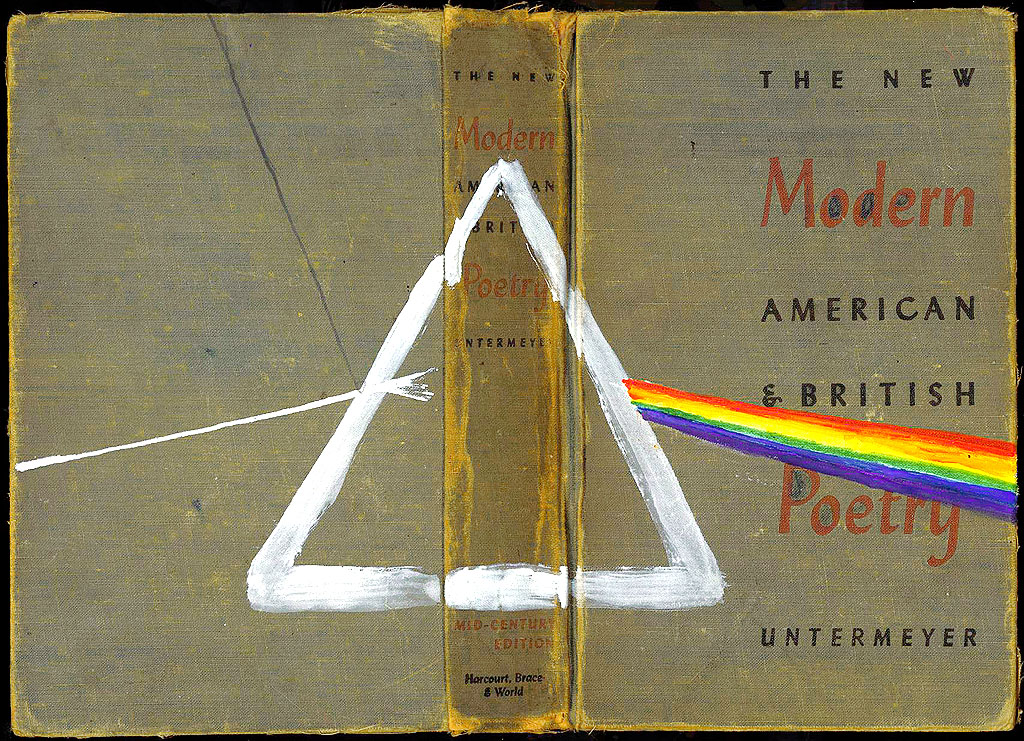
This morning I’m giving a talk on networked books at a libraries and technology conference up at Bentley College, just outside of Boston. The program, “Social Networking: Plugging New England Libraries into Web 2.0,” has been organized by NELINET, a consortium of over 600 academic, public and special libraries across the six New England states, so librarians and info services folks from all over the northeast will be in attendance.
In many ways, our publishing projects fit quite comfortably under the broad, buzz-ridden rubrique of Web 2.0: books as social spaces, “architecture of participation,” “treat your users as co-developers” (or, in our experiments, readers as co-authors). I’m going to be discussing all of these things, but I’m also planning to look at books in a slightly different way: as processes, or movements, in time.
Lately, when we’re explaining our work to the unitiated, Bob picks up whatever book is lying nearby (yes, we do have books), holds it up in the air and indicates with his hands the space on either side of the object: “here’s all the stuff that came before the book, and here’s all the stuff that came after.” That’s the spectrum that networked reading and writing opens up, and what the Institute are trying to do is to explore and open up new ways of thinking about all these different stages of creative flow that go into and out of books. Of our recent projects, you could say that Without Gods focuses on the “into” end of the evolutionary span while GAM3R 7H30RY deals more with the “out of.” Naturally, books have always been this way, but computers and networks make all of it manifest in a very new way that’s difficult to make sense of.
That’s what the picture up top is getting at, in a joshing way. Bob’s depiction of books in time reminded me of the famous prism image on the cover of Pink Floyd’s “Dark Side of the Moon” where pure white light turns to rainbow as it passes through the glass. I was joking about this with Alex Itin, our artblogger in residence, and yesterday he cobbled together this excellent image (and ripped the audio), which I’m going to work into my talk somehow. Wish me luck.
(Incidentally, “Books in Time” is the name of a wonderful essay by Carla Hesse, a Berkeley historian, which has been a big influence on what we do.)
if:book
A Project of the Institute for the Future of the Book

The book as social behavior opens huge dioramas for future prospects. Perhaps it is also useful to look at a narrow band to appreciate how much a dissolve of the bibliographic entity is enabled by the persistence, in the background, of that same bibliographical entity.
In our taxonomy of the physical collections of cultural patrimony the book is a corporeal, built object with an inside and an outside. It stands, opened to be read and closed to be protected. It is a cover with pages inside. Where can such a narrow grip on the question of “What is a book?” ever go?
One of the leaps from this definition is that the materiality of book is the displaced embodiment of the person. This extension derives from the inside/outside feature extended in various layers. Note that the book as a space of social behaviors would be seriously confined by this definition. But it turns out that the book making participants, authors and readers, are persons and that the counterpoints of engagement are given conceptual works in progress. This is the narrow universe of the book.
I suggest that Steven Wolfram’s A New Kind of Science, 2002, as a publication, will better define transitions of the role of the book in the future than the conjectures in Carla Hesse’s essay “Book in Time”. The book is a narrow, small thing that is empowering wide and ambitious re-positionings of book making. At first is appears to be a paradox that we would convey complex conceptual works in physical objects, particularly when electronic neural systems, bionic and technological, have much in common. But then we should factor in the physical entity of the person and the much more narrow scope of activity of authoring and reading.
I was at the conference today and your presentation was wonderful. I’ve recently given a few presentations on wikis with a focus on their use in libraries, thanks to you I’ve got some great new examples for future presentations!
I’m still troubled by this notion of the book as social space, insofar as it flattens any area of expertise. I’ll continue to examine this way of thinking, but I’m skeptical. I worry everything in society is considered social space, which is to the detriment of great thinkers, artists, people in society particularly able to analyze and convey deeper meanings of everyday transactions, objects, experiences. They are being obscured by people with selfish notions, who have the need to see themselves reflected in everything they look at.
But I continue to check out your site and will follow up with the book mentioned above…